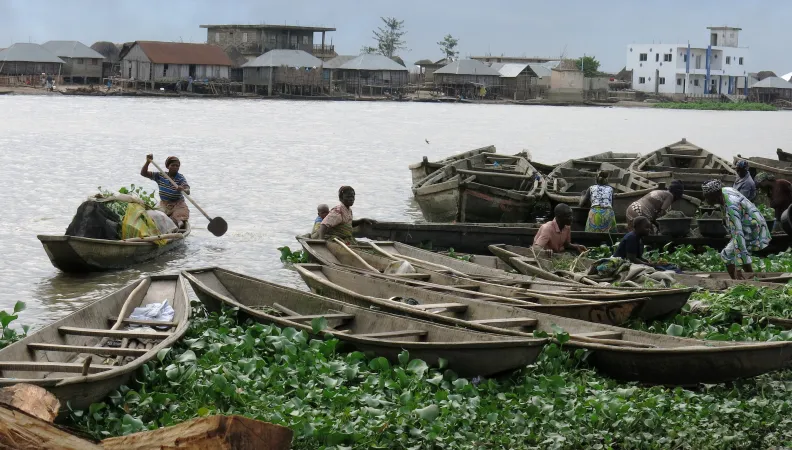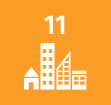Share the page
Porto-Novo, Green City: Strategic Planning and Sustainable Developments
Project


-
Project start date
-
Status
In progress
-
Estimated date of project termination
-
-
Project financing date
-
-
Financing duration
-
6 years
-
Type of program
-
FFEM
-
Global financing amount
-
€ 9 495 000
-
FFEM financing amount
-
€ 1 200 000
-
Project lead member institution(s)
-
AFD, French Ministry for Ecological and Inclusive Transition
-
Country and region
-
Benin, West Africa
-
Location
-
Porto-Novo
-
Type of financing
-
Beneficiaries
-
Ville de Porto-Novo
-
Type of beneficiary
-
Public local authority




To offer the city and its inhabitants a vision for urban development that integrates the principles of sustainable development through a strategic planning approach.
Context
Due to its history, Porto-Novo is a city with exceptional tangible and intangible heritage. It is home to high-quality natural areas and benefits from a strategic location that makes it a crossroads. Yet, despite having a population of 264,000 in 2013, the capital of Benin has experienced strong spatial expansion that is disconnected from its modest demographic growth. Lacking economic dynamism, Porto-Novo has not succeeded in establishing itself as a balanced development hub, nor has it managed to engage in a truly sustainable development path, despite its many assets and the efforts of numerous stakeholders working toward harmonious urbanization.
While the economic capital (Cotonou) concentrates most of the executive institutions and major infrastructure (port, airport, Dantokpa market, etc.), it limits the capacity to export market garden and fish farming products from the entire Ouémé Valley and the Porto-Novo region to Nigeria, as well as the flow of manufactured goods from Nigeria to West Africa.
Urban sprawl is encouraged by the high standard of living of certain social groups, the attractiveness of land seen as a safe and long-term investment, and the decline of the historic center in favor of new neighborhoods. These changes have had negative environmental consequences. In the peri-urban areas, most residents live in poorly organized informal subdivisions, encroaching on wetlands and marshes, which are often flood-prone. It is therefore relevant to propose a strategy and concrete actions to address these challenges in urban planning, the development of peripheral zones, and risk management.
Description
The project is structured around five components:
-
Development of a Sustainable Territorial Strategy
Define a shared vision for urban actors based on the concept of a green city—one that seeks to leverage its rich natural and cultural heritage, strictly prevents flood-related risks, and aspires to a strategic positioning as one of the key metropolises around Lake Nokoué, maintaining close ties with Lagos. -
Pilot Projects
Provide quick, concrete responses to local challenges in the Lokpodji area (economic development, environmental preservation, and social concerns), through actions that will generate broader environmental and risk management benefits for the entire city. -
Evaluation, Capitalization, and Dissemination
Based on the assessment of implemented actions, initiate a reflection process aimed at sharing the experience and facilitating the replication of these operations within the city, across the country, and more broadly throughout the sub-region—taking into account the limitations and specific context of the project. -
Project Governance
Strengthen the local capacities of Porto-Novo’s city council and promote the integration of sustainable development principles into municipal policies. -
Major Infrastructure Along the Waterfront
Launch structuring projects with economic purposes, incorporating upstream analysis of all relevant environmental and social factors to ensure their successful implementation.
Outcomes
Implementation of studies on the ecosystem of the lagoon area and the city
These studies provide key information that frames and feeds into the urban planning process being carried out in parallel.
Local developments and actions
These include, for example, a riverside promenade marking the boundary between land and water to protect and enhance the wetland area; training activities and adaptation measures to support production (fish farming, agriculture); the promotion of peri-urban agriculture (including a study on agricultural land tenure in wetland areas); and initiatives to enhance waste management.
Major developments
The creation of a lagoon beach and construction work for a lagoon port and piers.
Communication and outreach activities
A range of actions such as a dedicated website, filmed evaluations, knowledge capitalization, and experience-sharing initiatives—all designed to draw lessons from this approach, highlight its innovative aspects, and provide tools and methods for replicating the project in other locations.
Watch the video on the project
Sustainable Development Goals
ODD9 Industry, innovation and infrastructure

ODD11 Sustainable cities and communities

ODD13 Climate action

ODD17 Partnerships for the goals



